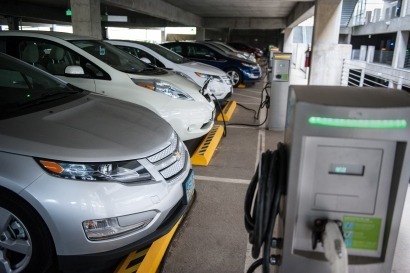
Drive System Design (DSD), a specialist engineering consultancy based in Warwickshire, will be working as part of a new, government-backed, consortium in a project that was announced at the recent LCV 2013 Low Carbon Vehicle event held in Bedford, UK, September 4th to 5th.
The £16.3 million Evoque_E programme is led by and Jaguar Land Rover and supported by the UK Technology Strategy Board (TSB) and its aim is to investigate options for improving EV powertrain architecture, including work on two and three speed transmissions and an attempt to effectively double EV motor speeds. The consortium will explore how new transmission and motor technologies could be implemented in order to increase EV range, performance and refinement.
“We know that multi-ratio transmissions will allow an EV – or an HEV on electric power – to run further and faster without compromising pullaway or gradient climbing ability” said DSD managing director Mark Findlay. “And we know that electric machines operate more efficiently at higher speeds. This programme is the first comprehensive review of these concepts and how they could be implemented for production in a premium vehicle.”
Jaguar Land Rover will be contributing £4 million to the cost of the project and the consortium also includes AVL, GKN Driveline, Tata Steel, Williams Advanced Engineering, Delta Motorsport, Motor Design Ltd and Zytek with support from Bristol, Cranfield and Newcastle universities. The aim is to build three development vehicles based on Land Rover’s new Range Rover Evoque model. These will provide mild hybrid, full hybrid and pure EV configurations.
DSD will be working on improving speed and with clutches and clutch strategies involving torque management and delivery to the wheels. In the full hybrid vehicle, the company will be working with GKN Driveline to adapt the transmission to a new ultra high speed motor designed by Newcastle and Bristol universities with Motor Design Ltd. DSD will also seek to reduce transmission Noise Vibration and Harshness (NVH) without compromising weight or durability.
In the pure electric vehicle, the DSD high speed transmission will be combined with the company’s MSYS three-speed power shifting gearbox with the aim of reducing the energy consumption EV’s by 10 to 15 percent as well as downsizing the motor in order to extend the time the motor is operating within its most efficient region.
Further information:

